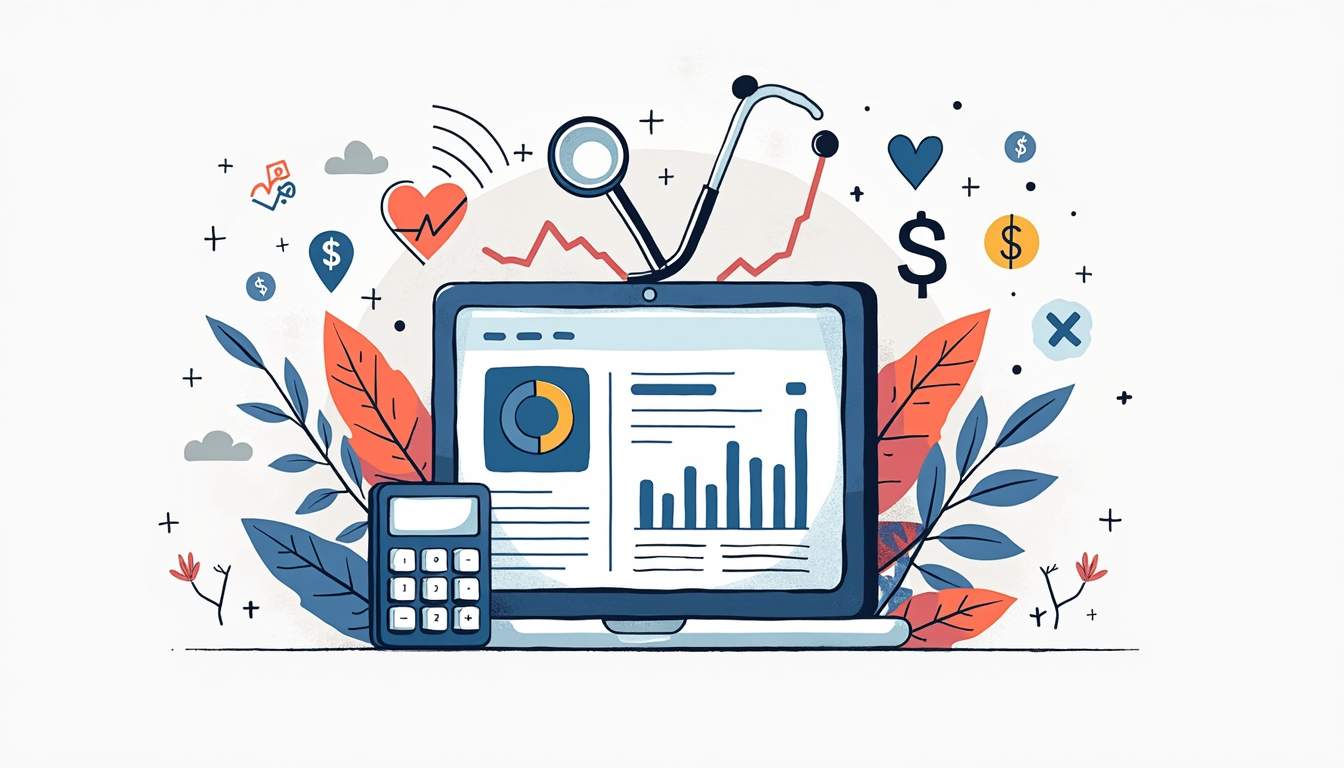Advertising medical devices on LinkedIn can be a powerful strategy to reach a targeted audience in the healthcare industry. However, understanding the costs involved can be complex and varies significantly based on various factors. This article delves into the different aspects of LinkedIn advertising, costs associated with various ad formats, budgeting strategies, and tips for optimizing your advertisements.
Understanding LinkedIn Advertising
LinkedIn has established itself as a premier platform for B2B marketing, providing businesses with the ability to connect with decision-makers in the medical space. Its advertising options are tailored to help companies promote their products effectively to a professional audience.

Basics of LinkedIn Advertising
LinkedIn offers several advertising formats, including Sponsored Content, InMail, and Text Ads. These options allow advertisers to showcase their products, share relevant content, and build brand recognition among industry professionals. Understanding these formats is crucial for effectively reaching your target audience.
Each ad format has its unique features. For example, Sponsored Content appears in users’ feeds, resembling organic posts, while InMail delivers personalized messages directly to users’ inboxes. This versatility allows advertisers to choose the format that best aligns with their marketing strategy and audience engagement goals.
Moreover, LinkedIn’s robust targeting capabilities enhance the effectiveness of these ad formats. Advertisers can segment their audience based on various criteria such as industry, job title, company size, and even specific skills. This level of precision ensures that marketing messages are not only seen but are also relevant to the viewer, increasing the likelihood of engagement and conversion.
Importance of LinkedIn for Medical Device Marketing
The medical device industry thrives on connections and relationships. LinkedIn provides an ideal platform for those within the industry to share knowledge, network, and promote products. Furthermore, the platform’s professional demographic means that advertisers are more likely to connect with healthcare providers, hospital administrators, and other key decision-makers who influence purchasing decisions.
In an industry where trust and credibility are paramount, LinkedIn allows companies to build their brand through thought leadership content and targeted advertising, fostering long-term relationships with prospects. By sharing case studies, white papers, and industry insights, companies can position themselves as authorities in their field, which is crucial for gaining the trust of potential clients.
Additionally, LinkedIn’s community features, such as groups and discussions, provide a unique opportunity for medical device marketers to engage directly with their audience. By participating in relevant conversations and sharing valuable insights, companies can not only enhance their visibility but also demonstrate their commitment to addressing the challenges faced by healthcare professionals. This engagement can lead to organic growth in followers and potential leads, as professionals begin to see the brand as a valuable resource in their industry.
Cost Factors of LinkedIn Advertising
The cost of advertising on LinkedIn can vary widely based on several elements. Understanding these factors is essential for setting realistic expectations and budgets for your campaigns.

Pay-Per-Click (PPC) Advertising on LinkedIn
PPC is one of the most popular models used on LinkedIn. Advertisers pay each time a user clicks on their advertisement, making it a cost-effective way to drive traffic to your website or landing page. However, costs can range significantly, typically between $2.00 to $7.00 per click, depending on various factors such as the competitiveness of your industry and your campaign’s quality score.
Among medical devices, the competition can be intense, leading to elevated bidding prices. Advertisers need to continuously monitor their campaigns and adjust their strategies to maximize their Efficiency (Return on Investment). Additionally, the quality of your ad copy and visuals plays a crucial role in determining your click-through rate (CTR). A well-optimized ad can not only lower your costs but also improve your ad’s ranking, making it more visible to your target audience. Regular A/B testing of different ad variations can help identify which elements resonate best with your audience, ultimately enhancing your campaign’s performance.
Sponsored Content Costs
Sponsored Content serves as a powerful tool for brand visibility and engagement. The pricing structure for Sponsored Content is typically based on impression counts or engagements. Generally, costs per impression can range from $6.00 to $9.00, but this can vary based on targeting options and audience segments. Ad creatives that engage users effectively and resonate well can achieve a lower cost-per-click.
It’s worth noting that businesses in the medical device field might benefit from developing compelling and relevant content that speaks directly to their target audience’s needs, given the technical nature of the industry. For instance, sharing case studies, white papers, or informative videos can not only enhance credibility but also encourage deeper engagement from healthcare professionals. Furthermore, leveraging LinkedIn’s analytics tools can provide insights into how your content is performing, allowing for data-driven adjustments that can optimize your advertising spend and improve overall campaign outcomes.
InMail Advertising Costs
InMail advertising allows you to send direct messages to LinkedIn users, which can be particularly useful for building relationships in the medical sector. The cost for InMail campaigns generally starts at around $0.50 per message sent, with packages available offering discounts on bulk messages.
This format can yield high engagement rates; hence, investing in personalized and well-crafted messages can be well worth the expenditure. The ability to communicate directly with key decision-makers can enhance your marketing efforts. Crafting messages that are not only informative but also tailored to the recipient’s specific challenges can significantly improve response rates. Additionally, including a clear call-to-action and relevant resources can further entice recipients to engage with your brand, fostering valuable connections that can lead to fruitful business relationships.
Setting Up a Budget for LinkedIn Ads
Creating an effective budget for LinkedIn advertising is crucial to ensure that you maximize your return on investment without overspending. Here are some guiding steps to set your budget effectively.

Determining Your Advertising Goals
Before setting a budget, you must clearly define your advertising goals. Whether you aim to generate leads, increase brand awareness, or promote a new product, your goal will dictate how much you should allocate for various ad formats. Advertising campaigns often require different budget levels depending on their objectives.
For instance, awareness campaigns may require more substantial budgets than targeted lead generation campaigns because they necessitate reaching a wider audience. Additionally, consider the lifecycle of your product or service; if you’re launching something new, you might need to invest more initially to create buzz and traction in the market.
Allocating Budget for Different Ad Formats
Once your goals are clear, it’s time to allocate your budget among different ad formats. It’s advisable to invest a portion of your budget in Sponsored Content due to its broad reach, while also considering InMail for its direct engagement benefits.
To ensure a balanced approach, consider distributing your budget based on the performance of previous campaigns and industry benchmarks, testing various formats to identify the most effective ones for your target audience. Furthermore, keep an eye on emerging ad formats, such as video ads or carousel ads, as they can offer unique engagement opportunities and may yield better results depending on your audience’s preferences.
Understanding LinkedIn’s Bidding System
LinkedIn uses a bidding system, whereby advertisers set maximum bids for their ads based on the competition in their specific markets. This system requires you to stay informed about industry trends and average bids to maintain competitiveness.
Understanding how to optimize bids based on your campaign performance can significantly affect your overall costs and effectiveness. Regularly reviewing and adjusting bids can help ensure that you are spending your advertising budget wisely and achieving desired results. Additionally, consider utilizing LinkedIn’s automated bidding options, which can help streamline the process and potentially enhance your ad performance by adjusting bids in real-time based on competition and engagement metrics.
Optimizing Your LinkedIn Advertisements
Once your ads are live, the work is not over. Continuous optimization is key to achieving the best possible outcomes for your campaigns. Here are some strategies for increasing the effectiveness of your LinkedIn advertising.
Targeting the Right Audience
LinkedIn offers robust targeting capabilities that allow you to filter your audience based on criteria such as job title, industry, and professional interests. This targeted approach is particularly beneficial in the medical device sector, where reaching the right professionals is crucial.
By understanding your ideal customer profile, you can tailor your ads to resonate with the specific segments of the market that matter most, ensuring that your advertising spend is effective.
Creating Engaging Ad Content
Creating high-quality, engaging ad content is essential for capturing the attention of your audience. In a field as technical as medical devices, using clear language, compelling visuals, and informative content can significantly improve engagement rates.
Highlight the unique features of your products and how they can impact users’ health and wellbeing. Addressing potential customers’ pain points can create a connection that encourages them to take action.
Measuring and Adjusting Your Ad Campaigns
Finally, regular measurement and analysis of your ad campaigns are crucial for ongoing success. Utilize LinkedIn’s analytics tools to track engagement rates, clicks, and conversions. Measuring performance against your initial goals will help in identifying areas needing improvement.
Adjusting your campaigns based on these insights—whether it be tweaking your targeting, changing ad formats, or modifying your creative—can enhance overall effectiveness and optimize costs.
In conclusion, while advertising medical devices on LinkedIn comes with associated costs, a strategic approach can lead to effective campaigns that ensure you are targeting the right audience while maximizing your budget. With the right mindset and preparation, LinkedIn can serve as a powerful tool in your marketing arsenal.